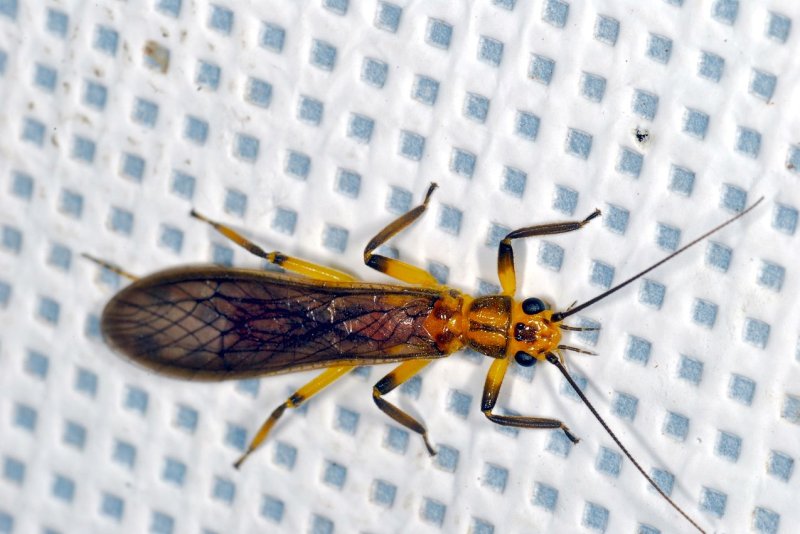The stonefly, or
Plecoptera, is one of three types of aquatic stream insects researchers compared to find their survival chances for climate change. Photo by Bernard Dupont/
Wikimedia
Nov. 6 (UPI) -- The traits that help create biodiversity in tropical mountain species also make them more susceptible to climate change, according to new research.
Researchers from Cornell and three other universities compiled data for the study, published Monday in the Proceedings of the National Academy of Sciences. During a two-year period, the team collected samples from Colorado Rocky Mountains streams and in the Ecuadorian Andes.
They found that animals living in tropical mountains can't adapt to drastic climate changes. This keeps those animals isolated in one ecosystem and unlikely to travel to others.
Over time, that geographic stagnation can curb gene flow and keep out animals from nearby populations, researchers reported. That isolation can also cause genetic changes in different populations that lead to new species.
But living in these narrow niche mountain environments makes these animals vulnerable to large swings in climate.
The research contrasted evolution rates of new species in three aquatic stream insects in temperate and tropical mountain regions: mayflies, or Ephemeroptera, stoneflies, or Plecoptera, and caddisflies, or Trichoptera.
They plotted the range of movement for each species by measuring their temperature tolerance and examining their population's genetics.
"Because the tropics are not as seasonal as the more northern temperate zones, bugs in the tropics can't get too cold or too hot, and thus they have a narrow thermal breadth," Kelly Zamudio, the Goldwin-Smith Professor in the Department of Ecology and Evolutionary Biology and a senior co-author of the study, told the Cornell Chronicle.
"We also found that they move less up and down the side of the mountain, and there are more species [on tropical mountains] as a result. Nobody had tested all three of those patterns in the same system before," Zamudio said.
On the other hand, she said, animals living in temperate areas have to endure four seasons of different weather patterns, which makes them more adaptable to different regions. That also allows them to share genes between populations, making them less diverse.
These findings back up similar research from 1967, the researchers said.
Future testing could occur to see if the same patterns are present in other mountain species, to predict which population is most likely to be endangered.
"It's really paradoxical that the same factors that lead to a lot of species are the factors that are going to endanger those species in the tropics," Zamudio said.















